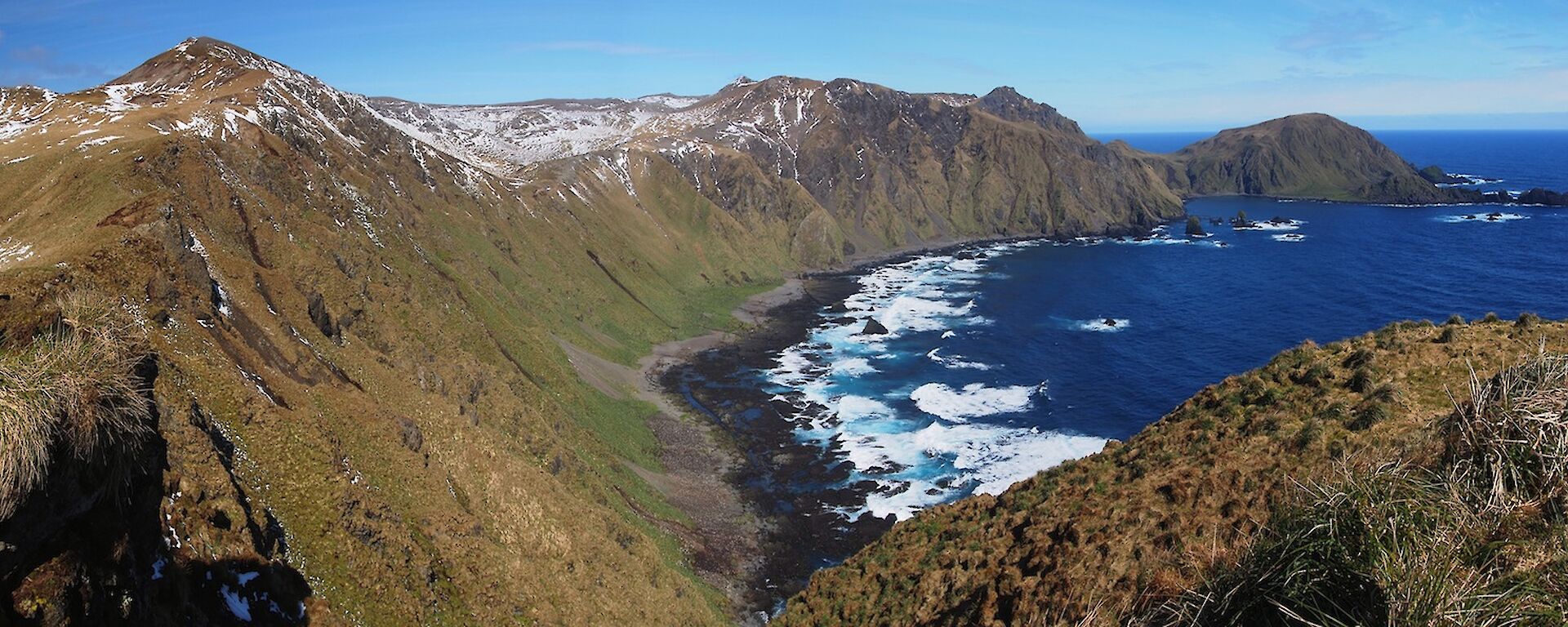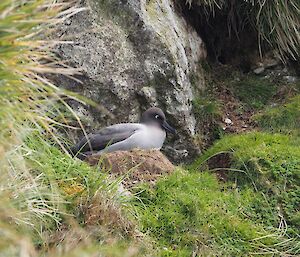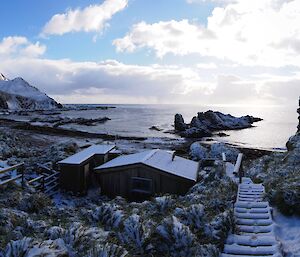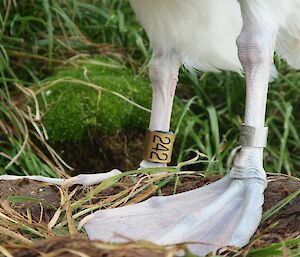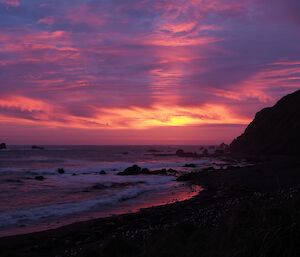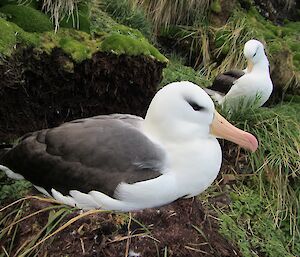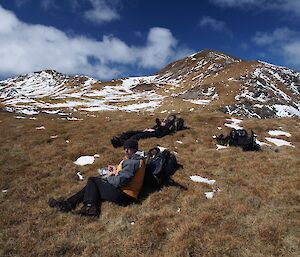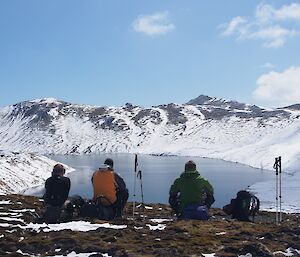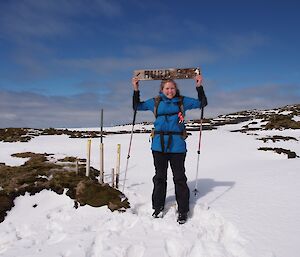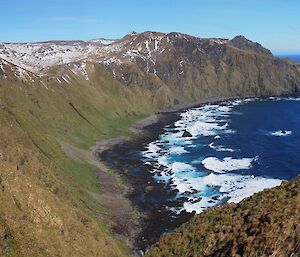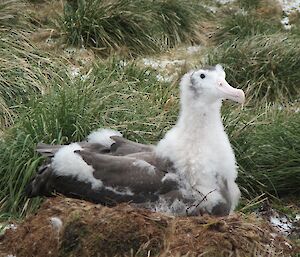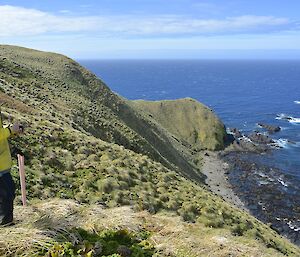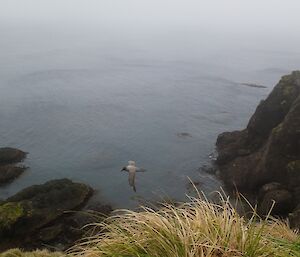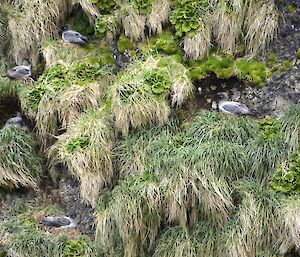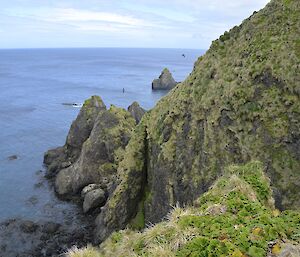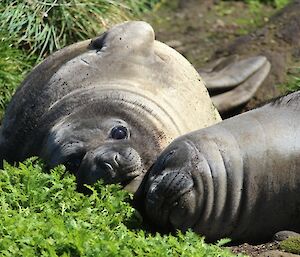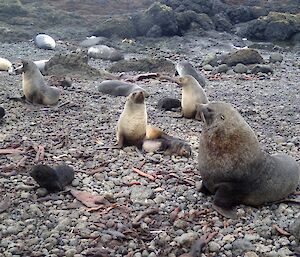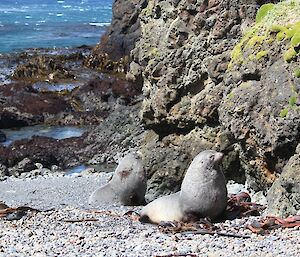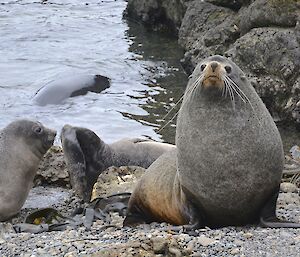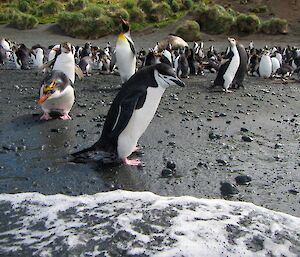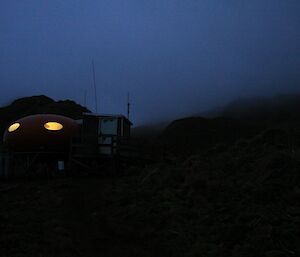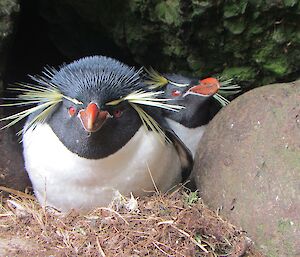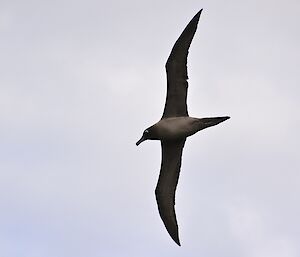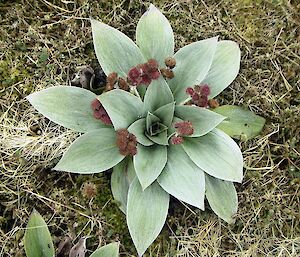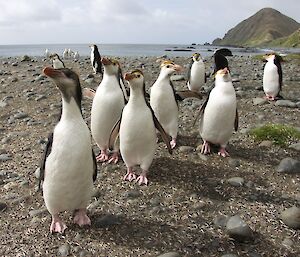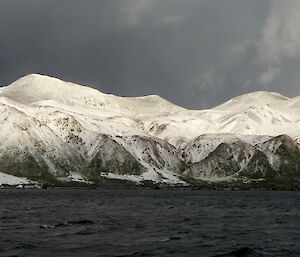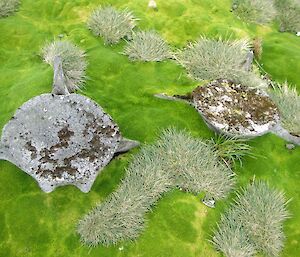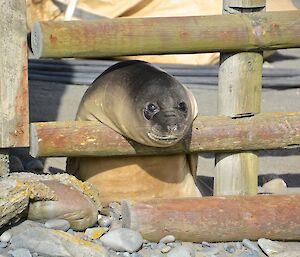The Albatross field team (Kate and I) have returned from the field after a three week mission at the southern end of the island. We were joined by Marty the Field Training Officer and Kris the Wildlife Ranger at the beginning of our trip for field training, working along the southern coast of the island with the odd nap in the sunshine that is apparently a rarity.
The fine weather has made Kris and Kate non-believers when it comes to Macca’s notorious extreme weather, but don’t worry — a trip across Windy Ridge in a blizzard will certainly put them back on track! After Marty and Kris left us we got to work identifying all the black-browed and grey-headed albatross nests on the island. This is no easy task, with both species nesting on the steep escarpment. Black-browed albatross are annual breeders with 44 active nests this season; this is an increase on the 37 from last year. It was also exciting to discover grey-heads nesting for the second year in a row at a new site amongst the thick tussock at Cape Star. This signifies an expansion of their breeding colony.
To analyse population trends and the survival of these species albatross researchers mark each nest, read individual bird bands and collect important habitat vegetation information. Albatross nesting habitat is changing rapidly with the removal of rabbits from Macquarie Island and this is anticipated to increase breeding success of albatross species by providing better protection for chicks from predators and extreme weather conditions.
After long days hanging out on the escarpment with the albatross we would make the trek back to the hut via the Hurd Point Grassy Jump-up, a renowned steep hill on the island. Tired legs would mean a race sliding down the hill on our backsides. The competition was fierce, with the current leader being Kate.
Our cooking skills have been put to the test this trip with the challenge to use polenta in as many ways as possible to reduce a backlog that has built up in all the huts. The two winning recipes were coconut and cherry polenta pudding and polenta, deb and parmesan hot chips. We look forward to updating the infamous Albatross Cookbook with our new additions.
We had many visitors to Hurd Point hut during out stay — we really appreciated the wine, meat and amazing aurora that Dave brought with him!
The highlight of the trip was banding the four wandering albatross chicks on the island. Being a newcomer, Kate learnt quickly to move fast and band with finesse after receiving a meal of krill over her new jacket. After three weeks of amazing weather consisting of sunny and snowy days and striking sunsets, we have big smiles on our faces, happy to have had a successful first trip.
Our next task is to collate the Light-mantled albatross census data which has been collected by the eradication team, so far we have over 1000 albatross breeding pairs counted, with more data coming in daily. This is a really exciting project for this season, being the first whole island census to be completed. We look forward to the next few weeks getting out and about the northern end of the island!
Jaimie

